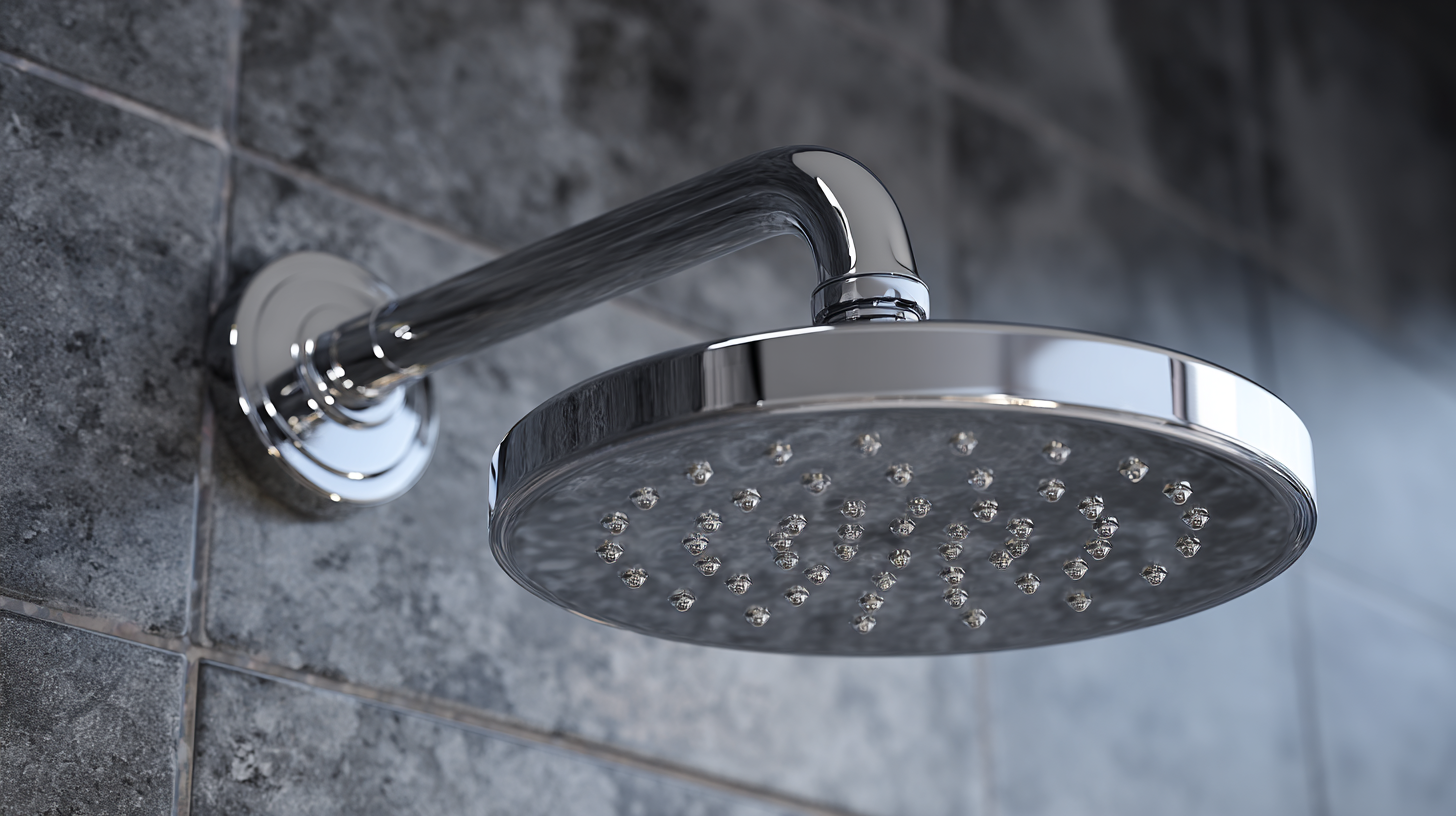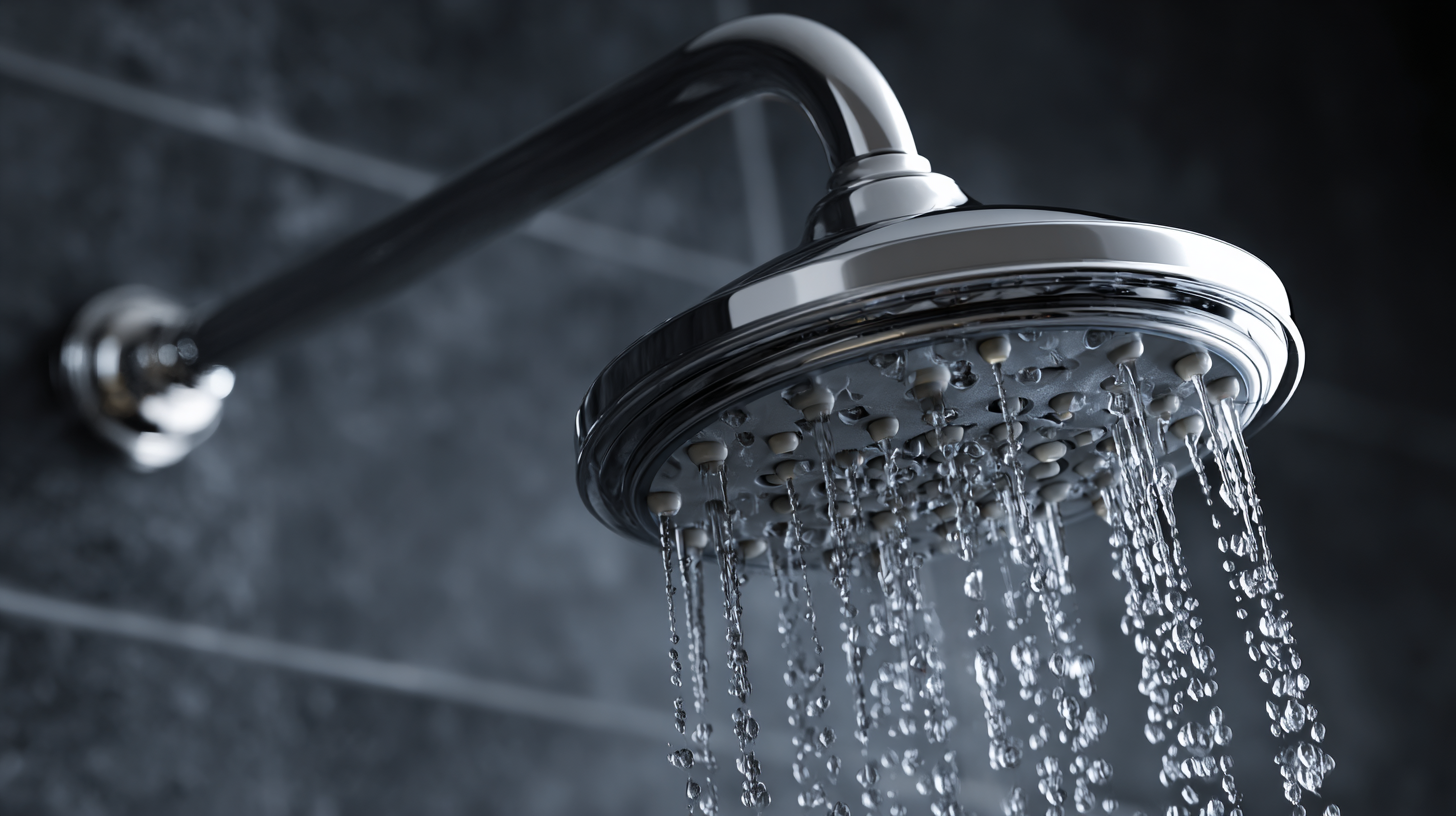
Global Market Insights for Best S S Shower Head by 2025 Trends Innovations and Opportunities
As the demand for premium bathroom fixtures grows, the S S Shower Head has emerged as a key player in the global market, projected to witness significant innovations and opportunities by 2025. According to a recent report by Grand View Research, the global shower head market is expected to reach USD 3.5 billion by 2025, driven by advancements in technology and increasing consumer preference for high-quality materials. The trend towards eco-friendly and water-efficient designs further bolsters the appeal of S S Shower Heads, with a notable rise in cross-border trade as manufacturers seek to meet varied consumer needs. With stringent import and export certifications shaping industry standards, stakeholders must navigate these regulations to capitalize on emerging market trends. This analysis will delve into the latest developments in the S S Shower Head sector, highlighting key opportunities and the evolving landscape of industry standards.

Industry Application Cases of S S Shower Heads in Residential Settings
In recent years, stainless steel (S S) shower heads have gained popularity in residential settings, primarily due to their durability and aesthetic appeal. Homeowners are increasingly opting for S S shower heads not just for their sleek look but also for their resistance to corrosion and wear. These fixtures can effortlessly enhance the overall bathroom design, providing a modern touch while ensuring longevity that plastic counterparts cannot match.
Moreover, the application of S S shower heads is increasingly driven by innovations in water-saving technologies. Many of these fixtures are now designed to optimize water flow while conserving resources, appealing to environmentally-conscious consumers. Homeowners can enjoy luxurious rainfall-like experiences without compromising on sustainability. As this trend grows, the introduction of advanced features such as adjustable spray settings and easy installation options will further solidify the position of stainless steel shower heads in the market, catering to the diverse needs of modern residential spaces.
Global Market Insights for S S Shower Heads by 2025
This chart illustrates the predicted growth and market trends for stainless steel shower heads in residential settings up to 2025. The data showcases the expected market share across different factors influencing consumer purchasing decisions.
Innovations in S S Shower Head Technology: What to Expect by 2025
The S S shower head industry is poised for significant advancements by 2025, driven by technological innovations and changing consumer preferences. Reports indicate that the global shower head market is expected to reach USD 11 billion by 2025, growing at a CAGR of 3.5% from 2020 to 2025. This growth is largely attributed to the increasing demand for water-efficient products and smart home technologies. Consumers are now prioritizing eco-friendliness, prompting manufacturers to develop shower heads that optimize water usage without compromising performance.

In particular, leading companies are investing in advanced materials and designs, such as stainless steel and anti-bacterial coatings, which enhance durability and hygiene. Furthermore, the integration of smart technology is gaining momentum. Innovations like adjustable spray patterns and temperature control through smartphone applications are setting new standards in user convenience and comfort. According to a recent market analysis, nearly 25% of consumers are willing to pay a premium for smart shower heads that offer customizable features. As these trends continue to evolve, the S S shower head market is likely to transform, creating a host of opportunities for both consumers and manufacturers alike.
How to Choose the Best S S Shower Head for Your Home: A Comprehensive Guide
When it comes to upgrading your bathroom, choosing the right shower head can significantly enhance your daily experience. A recent market analysis from Grand View Research indicates that the global shower head market is expected to reach approximately $18.2 billion by 2025, fueled by increased consumer focus on luxury and wellness within the home. This booming trend illustrates the importance of selecting a shower head that not only fits your style but also offers innovative features.
When selecting the best stainless steel (S S) shower head, consider factors such as water efficiency, spray patterns, and durability. According to the Environmental Protection Agency (EPA), WaterSense-labeled shower heads can save homeowners an average of 2,900 gallons of water annually, presenting both environmental and economic benefits. Moreover, stainless steel designs are known for their longevity and resistance to corrosion, making them a practical choice for modern bathrooms. By investing time in choosing a shower head that maximizes efficiency while complementing your aesthetic, you're not only enhancing your bathing experience but also contributing to sustainable living.

Emerging Trends in the Global Market for S S Shower Heads
The global market for stainless steel (S S) shower heads is experiencing significant growth, driven by rising consumer preferences for luxury bathroom fixtures and sustainable materials. According to a recent industry report, the global shower head market is projected to reach $3.5 billion by 2025, with stainless steel products accounting for a substantial share due to their durability and aesthetic appeal. The increasing focus on health and hygiene is also fueling demand for easy-to-clean and low-maintenance shower fixtures.
As innovations continue to emerge, manufacturers are exploring smart technologies, such as water consumption monitoring and temperature control features, which enhance user experience and energy efficiency. Reports indicate that the integration of IoT in bathroom fixtures is expected to increase user engagement and simplify home automation, further boosting the market for advanced shower heads.
Tip: When choosing a shower head, consider models with adjustable spray settings to customize your shower experience while conserving water. Additionally, look for energy-efficient designs labeled with WaterSense certifications, as they not only save water but also reduce utility bills in the long run. Embracing these trends can help you elevate your bathroom experience while making sustainable choices.
Opportunities for Sustainable Development in the S S Shower Head Industry
The S S shower head industry is poised for transformative growth, especially in the context of sustainable development. Recent market analyses, such as those from Grand View Research, indicate that the global shower head market is expected to reach USD 1.6 billion by 2025, driven largely by increasing consumer demand for water-efficient solutions. This shift towards sustainability is not merely a trend; it's a direct response to pressing environmental concerns. By integrating technologies like low-flow designs, manufacturers are not only reducing water consumption but also appealing to eco-conscious consumers.
Furthermore, the rise of smart home technology presents lucrative opportunities for innovation within the S S shower head market. Reports from Research and Markets suggest that incorporating IoT capabilities can enhance user experience while promoting sustainable practices. For instance, shower heads equipped with water usage tracking can help consumers monitor and adjust their water consumption, fostering behavioral changes toward conservation. As the industry embraces these sustainable innovations, key players are likely to gain a competitive edge by meeting the expectations of a growing demographic focused on environmental responsibility.



